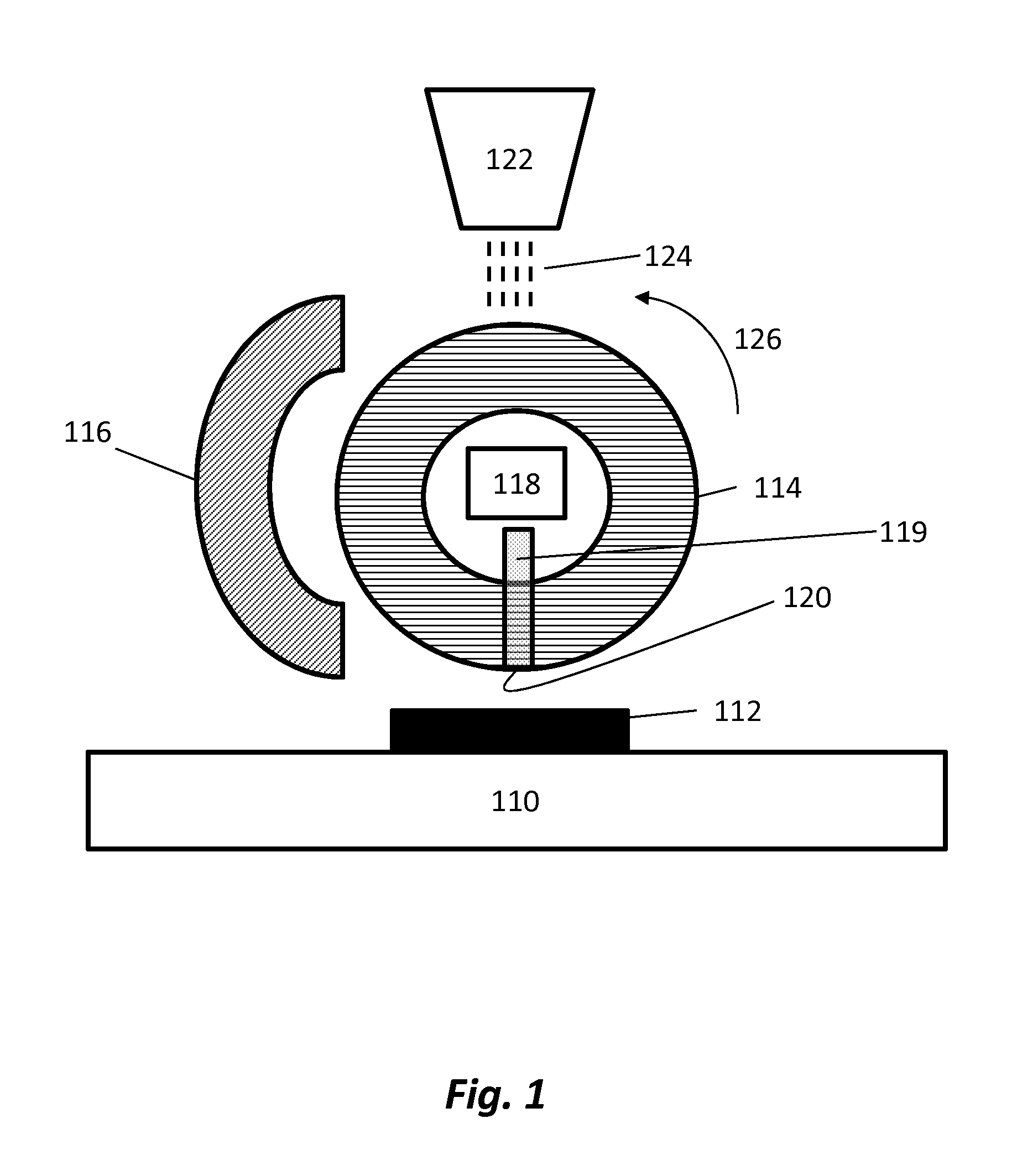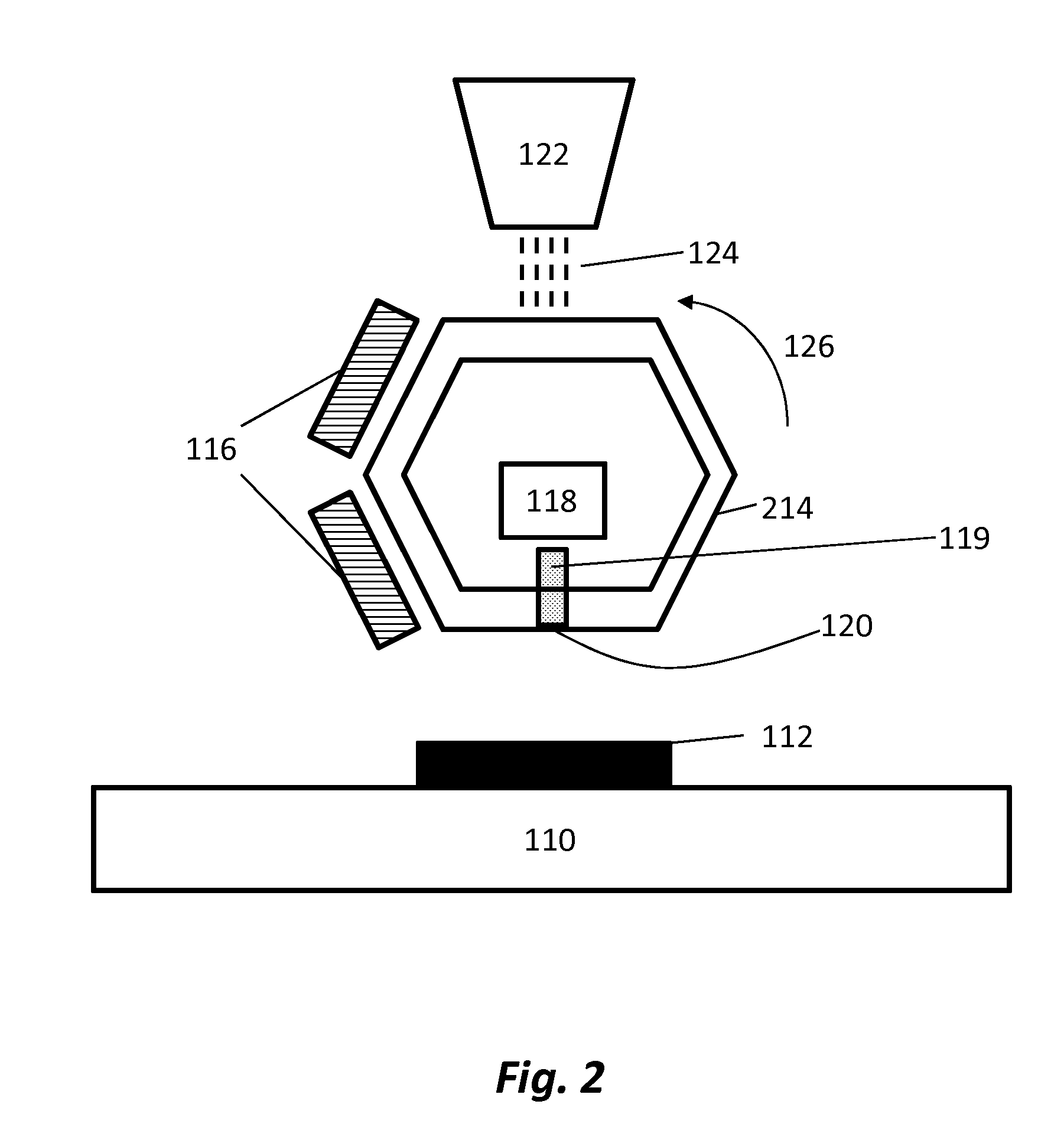Method and Apparatus for Depositing A Film Using A Rotating Source
a technology of rotating source and film, which is applied in the direction of transfer printing, coating, printing, etc., can solve the problems of inability to uniformly deposit the solid content of ink over the deposited area, the interaction is particularly problematic, and the uniformity and thickness variations are not acceptabl
- Summary
- Abstract
- Description
- Claims
- Application Information
AI Technical Summary
Benefits of technology
Problems solved by technology
Method used
Image
Examples
Embodiment Construction
[0040]FIG. 1 schematically illustrates a rotating drum deposition system according to an embodiment of the disclosure. In FIG. 1, film material delivery mechanism 122 meters out film material. The metered out film material 124 can be metered as one or more droplets or as a stream.
[0041]The film material can be delivered to the transfer surface in the form of a solid ink, liquid ink, or gaseous vapor ink consisting of pure film material or film material and non-film (interchangeably, carrier) material. Using ink can be helpful because it can provide the film material to the transfer surface with one or more non-film materials to facilitate handling of the film material prior to deposition onto the substrate. The film material can consist of OLED material. The film material can comprise a mixture of multiple materials. The carrier material can also comprise of a mixture of multiple materials.
[0042]An example of a liquid ink is film material dissolved or suspended in a carrier fluid. A...
PUM
 Login to View More
Login to View More Abstract
Description
Claims
Application Information
 Login to View More
Login to View More - R&D
- Intellectual Property
- Life Sciences
- Materials
- Tech Scout
- Unparalleled Data Quality
- Higher Quality Content
- 60% Fewer Hallucinations
Browse by: Latest US Patents, China's latest patents, Technical Efficacy Thesaurus, Application Domain, Technology Topic, Popular Technical Reports.
© 2025 PatSnap. All rights reserved.Legal|Privacy policy|Modern Slavery Act Transparency Statement|Sitemap|About US| Contact US: help@patsnap.com



